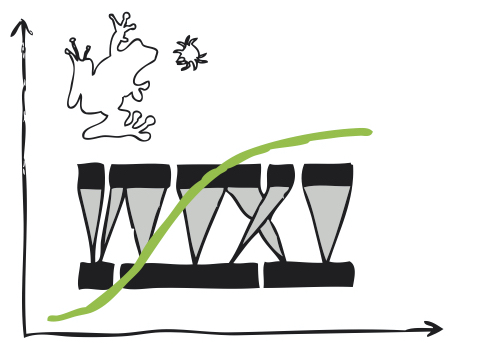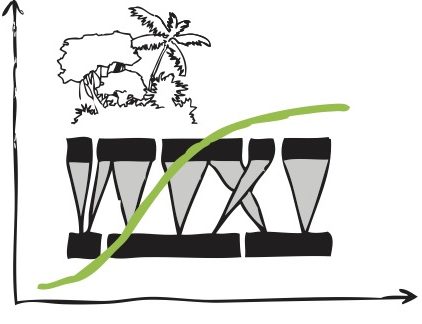Food webs and alkaloid defenses: frogs and litter fauna
PIs: Michael Heethoff (TU Darmstadt), Mark Oliver Rödel (MfN Berlin), Ralph Saporito (John Carroll U), David Donoso (Esc. Politécnica Nacional)

Within this research unit, we will investigate the structure of original and reassembled predator-prey networks, with a particular emphasis on the role of alkaloids as drivers for trophic interactions among anurans and their arthropod prey. While the poison frog-ant links have been studied to some extent, our knowledge about the biological importance of oribatid mites as alkaloid sources remains fragmentary. In contrast to poison frogs, most other leaf-litter anurans are not specialized on particular prey or even avoid alkaloid containing arthropods.
The different proportion and importance of alkaloid containing prey in the anuran diet, ranging from dietary specialists to species that avoid certain prey, likely results in a wide range of specificity in anuran-prey networks, relatively non-specific in most anurans versus highly specific in dendrobatid poison frogs. Along our chronosequence we expect these networks to be most complex in primary forest and least complex in the degraded areas (pasture and cacao). In the latter areas we expect the predator-prey network to be particularly disrupted in poison frogs and their prey, and in general, the networks to be less complex with lower diversity (species and functions) than in the undisturbed forest plots. Whereas we expect species and functional diversity to increase again in the recovering forests, we hypothesize that non-poison frog-prey networks recover faster (the sites only need to be reachable by the frogs and prey), but more or less random concerning the particular network links, compared to the dendrobatid poison frog-prey networks (the sites need to be colonized by the frogs and specific prey). Within the latter we also expect to see differences among species, as their dependence on oribatid mites or ants might differ. Frog-ant networks should recover quicker than frog-mite ones, ants likely being more mobile than mites.

Selected references:
- Adum GB, Eichhorn MP, Oduro W, Ofori-Boateng C, Rödel MO (2013) Two-stage recovery of amphibian assemblages following selective logging of tropical forests. Conservation Biology 27: 354-363
- Brückner A, Raspotnig G, Wehner K, Meusinger R, Norton RA, Heethoff M (2017) Storage and release of hydrogen cyanide in a chelicerate (Oribatula tibialis). Proceedings of the National Academy of Sciences USA 114: 3469-3472
- Brückner A, Heethoff M (2018) Nutritional effects on chemical defense alter predator-prey dynamics. Chemoecology 28: 1-9
- Heethoff M, Rall BC (2015) Reducible defence: chemical protection alters the dynamics of predator-prey interactions. Chemoecology 25: 53-61
- Heethoff M, Norton RA, Raspotnig G (2016) Once again: oribatid mites and skin alkaloids in poison frogs. Journal of Chemical Ecology 42: 841-844
- Hirschfeld M, Rödel MO (2017) What makes a successful species? – Traits facilitating survival in altered tropical forests. BMC Ecology 17: 25
- Niemeier S, Müller J, Struck U, Rödel MO (2020, early view) Superfrogs in the city: 150-year impact of urbanization and agriculture on a common frog. Global Change Biology https://doi.org/10.1111/gcb.15337
- Rödel MO, Brede C, Hirschfeld M, Schmitt T, Favreau P, Stöcklin R, Wunder C, Mebs D (2013) Chemical camouflage – a frog’s strategy to co-exist with aggressive ants. PLoS ONE 8(12): e81950
- Tietje M, Rödel MO (2018) Evaluating the predicted extinction risk of living amphibian species with the fossil record. Ecology Letters 21: 1135-1142
- Wehner K, Norton RA, Blüthgen N, Heethoff M (2016) Specialization of oribatid mites to forest microhabitats – the enigmatic role of litter. Ecosphere 7: e01336

